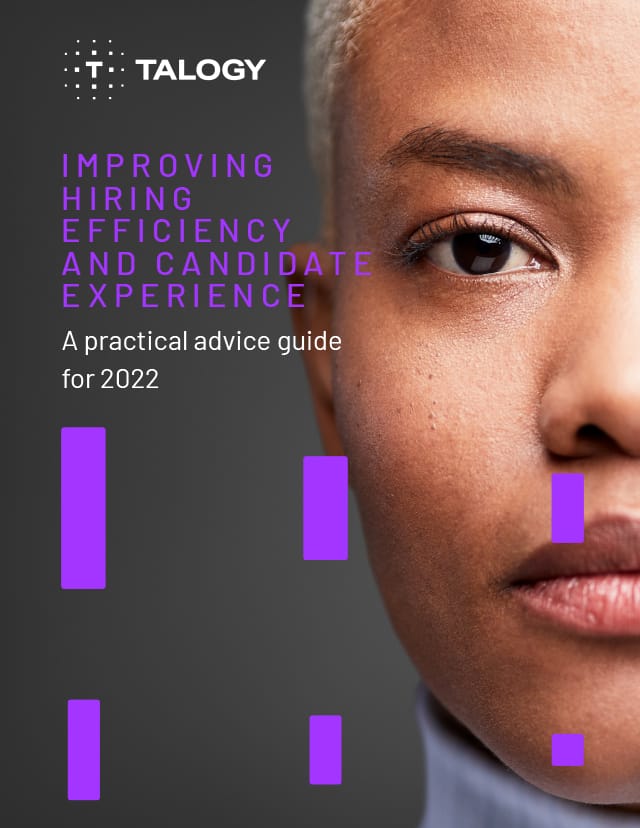Written by Rick Jacobs, Ph.D. and Ted Kinney, Ph.D.
Previously published by PSI Talent Management or Cubiks, prior to becoming Talogy.
The way we interact with technology on a daily basis has changed dramatically over the last 20 years. We have voice assistants, smart TVs, and other devices making the experience of our everyday lives more “engaging.” When organizations faced with an increasingly competitive labor market consider a selection procedure that does not provide an engaging level of candidate–technology interaction, it is reasonable for that company to ask whether there is a better way. In the eyes of many assessment consumers, in today’s selection systems, engaging the candidate and strengthening the employment brand has become just as important as the underlying measurement in the tool.
There is a wide array of approaches to improve what has been labeled “Candidate Experience” (CX). CX interventions focus on making the measurement of job-related Knowledge, Skills, Abilities, and Other Characteristics (KSAO’s) more enjoyable, more engaging and in some settings, more entertaining for the candidate. As the sophistication of technology applied to assessment increases, more and more innovative and truly amazing approaches have become possible via the inclusion of video, animation, job-simulation, and game mechanics blended into the assessment experience.
There are at least three compelling reasons that enhancing candidate experience may lead to useful outcomes when designing a selection process:
- Some believe it is a simple model: Greater Engagement → Higher Levels of Attention → More Accurate Assessment. This seems logical, although there are competing data supporting and refuting this idea. It is probably more complicated, but clearly, if we can enhance candidate focus, it should be a positive. The downside is that if the engagement enhancements are distracting or cause construct-irrelevant behavior, then it could lead to unintended outcomes. When considering engaging assessment experiences, it is important to remember that the first and foremost purpose of your assessment should be to get an accurate measurement of job-related KSAOs. Creating an experience that takes away from measurement is taking one step forward only to take two backward.
- Another positive outcome of CX interventions is that they may create a positive first impression with the candidate pool. Selection processes involve candidates making decisions about organizations, not just the other way around. It is possible that a top-notch technology-enabled assessment program sends a clear message to candidates about how much the employer cares about employees. Leveraging engaging technology-enabled assessments may be an important signal to candidates about the overall company culture and may help attract top talent.
- Finally, there is another aspect of leveraging technology to create an enhanced CX that is, unfortunately, often overlooked. In fact, this last benefit may be the most important. Many CX interventions result in much better assessments. For example, through enhanced technology-enabled assessment techniques, we can measure constructs that are not measured in most conventional assessment approaches. Measures of reaction time and processing speed have been predictive in many job settings in our research. By capturing trace data with interactive item types, we have access to more potentially job-related information about candidates than we have ever had before. Further, some experience enhancements make measures more equivalent across user contexts (for example, using slider response options over radio buttons has advantages for smaller screen sizes). All of these are examples where the CX intervention has also improved not only engagement, but also the measurement characteristics of the tool, which is a powerful win-win for everyone.
As we continue to work with our clients to enhance the experiences of our candidates, it is important to recognize that making the best business decisions with our candidate pool should be our primary focus. Engagement is an important component of improving the process, but entertainment for the sake of fun does not help our clients solve business problems. PSI’s goal is to help “People Meet Potential” in every phase of the talent life cycle. When building assessment content, we endeavor to be at the center of the intersection between science and technology. We are uncompromising in our scientific rigor while also passionate about innovating our ability to leverage technology to impact careers. With this dual focus, we have had tremendous success in building scientifically sound (i.e., predictive, fair, and defensible) solutions that also strengthen the relationship between the candidate and the employer by engaging the candidate with interesting assessment experiences.


